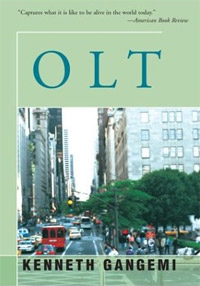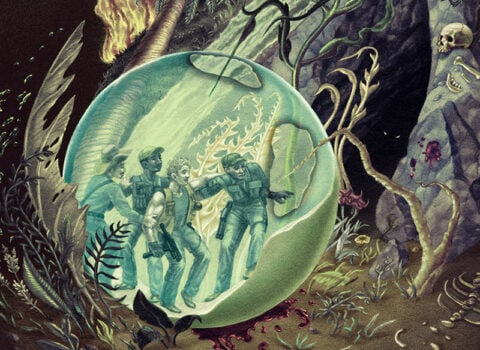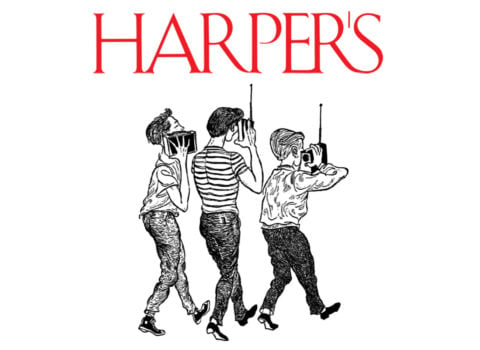
“Feeling that a style is natural and inevitable,” wrote Guy Davenport in his The Geography of the Imagination, “is like being among people with whom we share tradition and prejudices.” The sentence is allegedly about what literary style is like, but ends up, in the Davenportean way, being equally a thumbnail of how human societies make themselves at home, through unthinking inheritances of behavior and thought. “Style can therefore be invisible,” Davenport continues, “blending with our ignorance.” That is to say: if as readers we find ourselves at home in a style, we are less likely to find ourselves able to question the choices the writer has made. Such choices are coherent to us readers, in the way a dialect would be comprehensible to a particular group of natives.
One of the writers to whose style Davenport alludes approvingly in the above is Kenneth Gangemi. My early edition of Davenport’s book (bought for a buck on ABE—it’s another I regularly give away) misspells it “Gargemi,” and although current editions remedy this error, that seems to be the only correction to Gangemi’s reputation that the intervening years produced: his work is mostly out of print and Wikipedia suggests he doesn’t exist.
Gangemi’s best book is a little novel called Olt (1969). Not fifty pages long, comprising three brief independent narratives, the novel exemplifies a definition of style that Marcel Proust gave in a 1913 interview:
Style has nothing to do with embellishment, as some people think; it’s not even a matter of technique. Like the color sense in some painters, it’s a quality of vision, the revelation of the particular universe that each of us sees and that no one else sees. The pleasure an artist offers us is to convey another universe to us. (Trans. Roger Shattuck)
Olt offers very little plot, very little character, and certainly no character development. In its place, we are inside the head of the eponymous Robert Olt, looking at things with him as he walks and sits. His quality of vision defies tedium; a visit to a zoo is a visit to another universe of careful seeing:
During the winter he had watched the macaques turned out to play in the snow. He had watched the keepers take buckets of neat’s-foot oil and long-handled brushes and oil the elephants. They had told him that one of the performing elephants, in order to avoid punishment for mistakes, secretly practiced her act at night.
Olt had seen a bighorn ram mount a small female, forcing her to her knees. He had walked through the Australian collection and seen the kangaroo, boobook, bandicoot, cockatoo, kookaburra, numbat, nardoo, wallaby, wallaroo, and jackeroo. He had gazed with admiration at the furry, black-and-orange scrotum of the Bengal tiger and had wanted to swap.
Imagistic and spare, Gangemi’s stylistic choices are so restrained as to be almost invisible. Descriptions bubble with emotion nonetheless, owing, I think, to small touches that take plain writing and color it gently: the elephant who avoids punishment through secret work practices “her” act, not “its”–a humanizing gesture. The female ram, described only as “small,” is forced to her knees, but that smallness adds perceptibly to the violence of the act. That black-and-orange scrotum, though, is the most particular Gangemi touch. The seeing of it; the rapid transit of it in Olt’s brain—his wanting to swap his with the tiger’s. I suspect that detail—the sight of it and the thought about it—gains or loses a reader.
Some will feel something unwholesome about that kind of intimate regard, whereas others will find something, as Davenport wrote, “natural and inevitable” about that style—of seeing, of thinking, of writing. The whole of Olt, which if it’s about anything is about the free-ranging nature of the human mind when unobserved and unjudged, is as particular.





